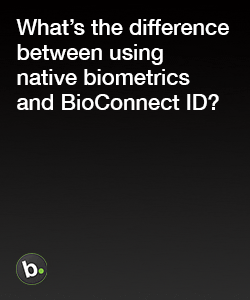Biometric identification and authentication technologies offer a wide range of potential uses, and thanks to their reliability and ease of use in verifying identity, they have been notably embraced by the financial services sector and government authorities. But there’s another vertical market where such biometric technologies can prove particularly impactful: Healthcare.
High Stakes
A key opportunity here lies in patient identification. This is such a fundamental component of the provision of healthcare that it almost escapes notice; but it’s also an area where there’s room for improvement. A survey of CIOs from 55 healthcare organizations from last year helps to illustrate the situation – and the stakes – with 17 percent of respondents indicating that patient harm had occurred at their institutions as a result of patient matching errors. That’s a gravely serious issue; in healthcare, lives are literally at stake when it comes to the matter of identification.
This is where the unique advantages of biometric technologies can make a real difference. By using biometric technology – face scans, fingerprint reading, palm vein recognition, and so on – healthcare professionals can establish a fundamental link between a given patient and their records. This, in turn, can limit or eliminate the wasteful duplication of records, fight fraud, streamline operations, and improve efficiency. Most importantly for patients, biometrics can ensure that they are always identified correctly so that they can receive the care they need.
It’s no wonder, then, that healthcare professionals have started to recognize the considerable benefits and potential that biometric technologies have to offer – a trend that has ramped up markedly over the last couple of years. In 2017, for example, the CHIME Healthcare Innovation Trust National Patient ID Challenge sought to find innovative new solutions for patient identification. All four of the solutions that made it to its final round incorporated biometrics.
Healthcare Providers Take Interest
At this point, there have also been numerous real-world deployments of biometric patient identification systems. Imprivata, which offers a patient identification solution that links palm vein biometrics to health records, saw two major deployments last year, in Missouri’s six-hospital CoxHealth network, and in Indiana’s 200-site Community Health Network.

Another healthcare services provider, Population Services International, recently announced that it’s exploring the benefits of mobile biometrics. The nonprofit organization is focused on providing care for endemic health issues to the world’s poorest communities, and has partnered with New York-based Element to trial an Android-based system that can use palm or facial recognition to identify younger patients who may lack official identification.
And then there’s Nuance Communications, which has seen multiple deployments of its Dragon Medical solutions for clinical dictation. These aren’t biometric solutions per se; rather, they use speech recognition and AI technologies to automatically record patient notes and records. But Nuance also happens to be a voice recognition specialist, and given current trends, it won’t be a surprise to see Dragon Medical infused with biometric patient identification capabilities down the line.
Health IT Platforms, Too
Meanwhile, IT solutions providers already established in the healthcare market are racing to integrate biometric capabilities into their own platforms.
For example, in the latter half of 2017, Just Associates, a provider of data integrity services for healthcare providers, integrated Imprivata’s biometric technology into its platform. Then, toward the end of last spring, Imprivata saw its PatientSecure solution integrated into Vecna’s patient self-service solution, with a focus on helping healthcare providers to effectively identify patients in ambulatory and acute care settings.
And about a year ago, LifeMed ID announced that its Authoritative Identity Management Exchange platform would take advantage of ImageWare’s multimodal biometric authentication suite in a bid eliminate duplicate patient records and automate related processes.
Then there are the meta-platforms, the overarching standards frameworks that help to set the playing field for everyone in the market. Last spring, multiple global companies involved in the healthcare sector including Arm, ForgeRock, Philips, Qualcomm Life, Sparsa, and US TrustedCare announced that they had banded together to establish “OpenMedReady“, a standards body focused on ensuring that the patient data used by healthcare practitioners is accurate. They indicated that smartphone-based fingerprint recognition will be a key element in their framework, as a means of tying medical data directly to patients.
A Healthy Future for Healthcare Biometrics

As OpenMedReady continues to evolve, it’s fair to expect the incorporation of additional biometrics, especially now that facial recognition is starting to emerge as another key modality in consumer devices. It’s also reasonable to expect more standards bodies involved in the medical sector to focus on how biometric technologies can be incorporated into existing frameworks to make care both less expensive and more effective – especially as a growing number of biometric solutions flood into the market.
All of this is going to be good for patients, who will benefit from reliable and non-intrusive identification upon arrival at healthcare facilities, even in situations where they’re not able to identify themselves.
Hospital CIOs will be able to rest a bit easier, too.
*
Healthcare Biometrics Month is made possible by our sponsors: BioConnect, Veratad, and HID Global.
–
February 14, 2019 – by Alex Perala







Follow Us